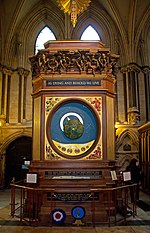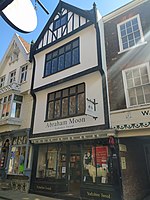Roman column, York

A Roman column stands in Minster Yard in the English city of York. Originally built around the first century, by the soldiers of Legio IX Hispana, it was reused by Legion VI in the 4th century. It is believed to have been part of a group of sixteen freestanding columns (eight on each side of the nave), supporting the walls of an earlier church on the site. The column was discovered beneath York Minster during a 1969 excavation, and was given to the City of York three years later to mark the 1900th anniversary of the city's founding.The column is 7.6 metres (25 ft) tall and constructed of Magnesian Limestone and millstone grit. It now stands in front of the Minster School, in Minster Yard, on the southern side of York Minster.
Excerpt from the Wikipedia article Roman column, York (License: CC BY-SA 3.0, Authors, Images).Roman column, York
Minster Yard, York Bishophill
Geographical coordinates (GPS) Address External links Nearby Places Show on map
Geographical coordinates (GPS)
| Latitude | Longitude |
|---|---|
| N 53.96165 ° | E -1.0818 ° |
Address
Roman Column
Minster Yard
YO1 7HL York, Bishophill
England, United Kingdom
Open on Google Maps











